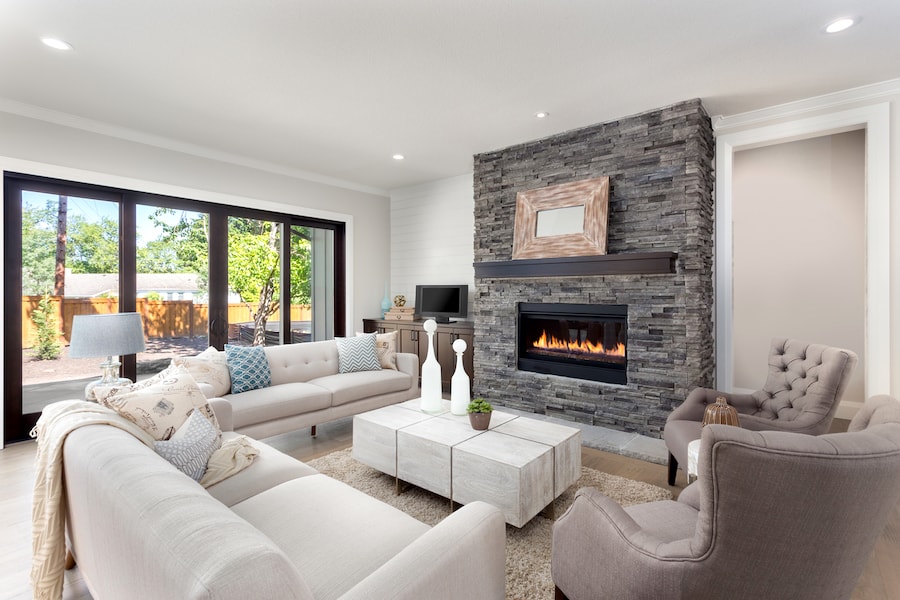
As mortgage rates increase and inflation continues to rise, buying a fixer-upper can be a strong option for new homebuyers. Buying a fixer-upper with the FHA 203(k) home loan can be a fast way to get into a great location below market value. What’s more, you can build home equity fast in today’s housing market. That said, buying a home that needs a lot of repairs and remodeling isn’t for everyone. A fixer-upper can quickly become a money pit with endless surprises and a non-stop list of expensive repairs for homebuyers who rush in too quickly. Not to mention extra stress and tackling what it looks like to bring an old home up to code with current city standards.
So here’s the good news: if you’re ready to dive into a home renovation project or buy a fixer-upper, then the FHA 203(k) home loan can help you save money, plan ahead, and build equity fast. Without losing money along the way.
RELATED: Top 7 Ways to Increase the Value of Your Home in 2022
FHA 203(k) Home Loan Explained
The FHA 203(k) home loan is a government-backed loan by the FHA (Federal Housing Administration) created specifically for new homeowners who are ready and eager to take on a fixer-upper or remodel a home that needs substantial work. It has a few different names, but they are all the same home loan and work the same: FHA 203(k) Home Loan, Mortgage Rehab Loan, Section 203(k) Home Loan.
In short, the FHA 203(k) mortgage finances the home’s purchase price and the cost of repairs into a single home loan. One mortgage payment covers everything.
For many who buy a fixer-upper, there turns out to be a lot of extra work once the project gets underway. The FHA 203(k) eliminates that stress. However, there is a fair amount of preparation and planning that goes into an FHA 203(k) home loan. This article lays out the process so you know what to expect.
Related: How to Finance a Renovation with the Fannie Mae Homestyle Loan
When the FHA 203(k) Home Loan is a Smart Move
An FHA 203(k) home loan takes the initial purchase price of your new home and combines it with the total estimated costs of repairs and renovation. The result is one home loan that covers your new home and all pending repairs and puts everything into one mortgage payment.
This means you can buy a fixer-upper and you’ll have one mortgage—instead of multiple loans or lines of credit to finance the renovation. With all the costs rolled into one home loan, homeowners are less likely to get stuck in a money pit or a surprise property with endless unexpected repairs.
RELATED: Refinance your mortgage and pay off your debt in 2022
How it Works
The FHA 203k loan combines the purchase price of your home with the total cost of repairs into one mortgage, including labor and materials.
With the FHA 203(k) home loan, the entire cost of the remodel must be estimated and accepted before the home loan is approved. To qualify for the FHA 203(k) home loan, all estimated repairs, including labor and materials, have to be approved upfront which can protect the homeowner from unexpected costs down the road.
Once your loan is approved, you can rest easy and know that you’ve got the financing needed to finish the work on your new home.
The FHA 203(k) loan has a built-in safety net that can help buyers build equity fast without over-extending their finances, especially if this is your first fixer-upper.
How to Apply: FHA 203(k) Home Loan Mortgage Options
The Section 203(k) home loan is typically offered as a 15-year fixed or 30-year fixed-rate loan, but you can also apply for an adjustable-rate mortgage (ARM). The rates might run a little higher than conventional home loans, but once the repair work is finished, refinance options may be available.
If you’re looking to stay in the home long-term, a fixed-rate mortgage will give you greater financial security and a mortgage payment that won’t change no matter how the market is moving.
On the other hand, if you’re planning to own the home for less than 5 years, then an ARM might give you a lower rate and the flexibility you want.
RELATED: How to find the best mortgage lender in your area
Can I refinance a home renovation with the FHA 203(k) loan?
The FHA 203(k) mortgage has refinance options available for current homeowners who want to do a big remodel. It’s an especially good option if you don’t want to open a line of credit or take out a second loan against your home equity.
Are there any restrictions with an FHA fixer-upper loan?
A few rules and regulations to get approved for a 203(k) mortgage:
- The property must be your primary residence
- Renovations can cost no more than $5k
- You must work with a HUD consultant
- A licensed contractor must complete all repairs
- All renovations must be finished within six months
- FHA 203k loan requires mortgage insurance
- An FHA appraiser approves final estimates
The 203k loan isn’t available for investment properties (or secondary properties) or homes priced above current conforming limits ($822,275 in high-cost areas, $510,400 in lower-cost areas).
What kinds of repairs are covered with the FHA 203k?
Homebuyers can use a standard FHA 203(k) mortgage to do almost any type of renovation except for luxury amenities (e.g., a swimming pool or backyard kitchen). Also, all updates and repairs must be considered “permanent” for the home. A few popular renovations that are covered:
- Upgrades to remove health and safety hazards
- Improve accessibility for a disabled person
- Update plumbing and sewer systems
- Structural changes such as adding bedrooms
- Remodel bathrooms and kitchens
- Install or replace flooring, windows, roofing
- Major landscaping projects
It’s a good idea to meet with contractors early to make sure your project can begin as soon as the loan closes. Make sure to find a contractor with experience working on projects financed with an FHA 203k loan.
How much do you have to put down on a 203k loan?
- Down payment is typically 3.5% of the purchase price plus the cost of repairs
- The maximum loan amount is 110% of the formal appraisal
- Mortgage insurance is required
- A minimum credit score of 580 (most lenders may require 620+)
For homebuyers with a credit score between 500-580, the typical down payment required is 10%. Gifted funds are allowed from friends and family, and down payment assistance programs might also be available. Connect with a local mortgage advisor to decide which mortgage program will save you the most money.
Compare: Should I use a Home Equity Loan or HELOC for a home remodel?
Summary
Buying a fixer-upper can be a smart financial decision for homeowners looking to enter today’s housing market. Especially in locations with higher prices. In general, the FHA 203k loan is a good fit for any primary residence that needs a substantial amount of work. Loan requirements, such as how much you can borrow and how you can spend the money, are set by the FHA during the loan approval process.
The main benefit is that all the construction work and repairs are estimated at the onset and rolled into one mortgage. So you’ll be protected from over-extending yourself or falling into a money pit after you buy the property.
A few quick reminders: Properties that need less than $5k in repairs won’t qualify for a 203k loan. Also, it’s not a good fit for luxury renovations since the FHA limits how much a homeowner can borrow.
Take Action
If you’re considering buying a fixer-upper, we can help you decide which mortgage is best for your renovation. There is a lot of paperwork and requirements to get approved for an FHA 203k loan, but it’s worth it. Plan your renovation, save money, and no surprises. We can help you be fully prepared before you make an offer. Connect with a local mortgage advisor to get started. We’d love to help.




